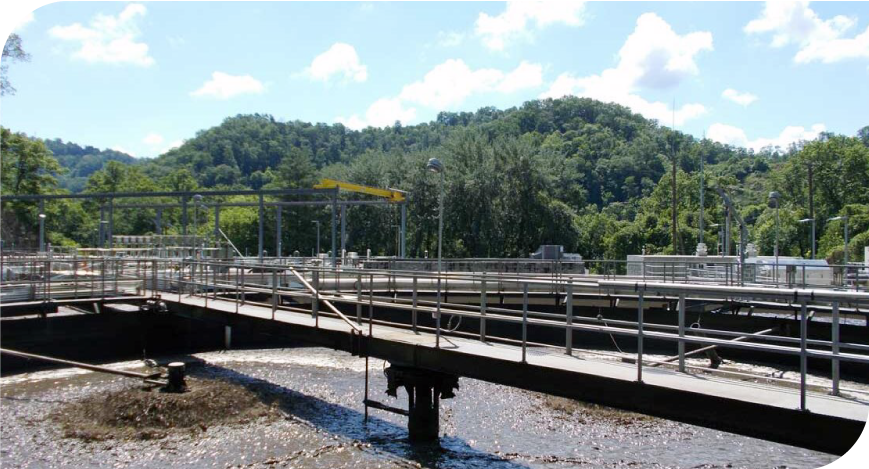
Building Appalachia’s infrastructure has been an ARC investment priority for over 60 years, especially the development and maintenance of basic infrastructure systems for water, sewer, energy and stormwater.
The City of Pikeville, Kentucky has made this important connection. By investing in a high-tech wastewater treatment plant, they’re ready for a full spectrum of economic growth that will last far into the future.
Pikeville’s Wastewater Treatment Plant
Pikeville is home to approximately 7,700 people and is the seat Pike County, located in the most eastern part Kentucky. According to City Manager Phillip Elswick, their 2016 application for ARC infrastructure support was an attempt to keep pace with new investment. The proposed expansions of Pikeville Medical Center and University of Pikeville, in addition to a new industrial park, would strain existing infrastructure. One of the most pressing concerns was the consistent use of the wastewater treatment plant at over 80% capacity, The two million-gallon plant would need to be significantly expanded to meet Pikeville’s future needs.
The Project
When considering the location and capacity of a new plant, Pikeville’s mountainous terrain offered both challenges and opportunities. There were few available locations for large facilities — the best place would be on the same footprint as the existing wastewater treatment plant. Those same space and eficiency challenges, however, pushed the City to research a wide variety of wastewater treatment technologies before selecting a new membrane filtration system. Membrane filtration increases plant efficiency and ensures discharged water is even cleaner than the environment to which it’s returned.
Over the three-year project, Pikeville encountered the challenge of continuing plant operations while implementing the expansion. A good relationship with their contractors and staff engineer smoothed this complicated transition, and the project was completed in early 2020. Their wastewater treatment capacity effectively doubled from two million gallons per day (MGD) to 4-MGD.
After the Project
Planning for growth has proved a valuable mindset for Pikeville. The 2020 Census showed an increase in 850 people over the last 10 years, and both Pikeville Medical Center and the University of Pikeville followed through on expansion. The new industrial park is complete with two business occupants, and the city is expecting more large commercial retail development. The updated membrane wastewater treatment plant has served this growth well, with the city even hosting other communities interested in the new technology.
Manager Elswick’s advice for future grant applicants? “Start early. Bidding for a project can cost more than initially estimated and you may need to rescope for a price you can afford. Contract with design professionals that know technology and include operator training in your project. Lastly, plan for the future — overdesign and overbuild to meet predicted future demands.”
“Pikeville has growth as an attitude, both for our population and economically,” said Elswick. “We’re always looking for new businesses and ways to support our existing institutions.”


